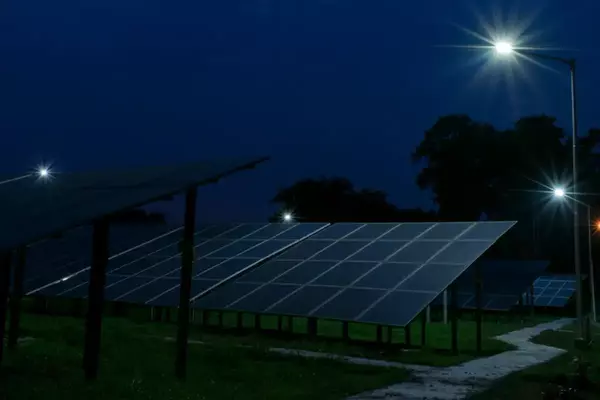The electromagnetic spectrum contains a wide range of wavelengths in the solar radiation that reaches our planet. Only 42-43% of this light is visible to human eyes. However, photons are the fundamental building blocks of all light, including light that is invisible to humans. These photons are converted into electricity by solar panels. But the energy concentrations of the photons from various forms of light vary.
Infrared photons lack the energy necessary to dislodge electrons and induce electrical flow. Additionally, ultraviolet photons have an excessive amount of energy; while they can still produce electrical flow, a large amount of that energy is lost as heat. The panels are warmed by this heat, which lowers their effectiveness.
Using technology similar to night-vision goggles, researchers have developed a device that can generate electricity from thermal radiation. The sun’s enormous energy may soon be harnessed in the dark of night following a significant advance in thermal capture technology.
Solar radiation heats the earth’s crust significantly during daylight hours, but that energy is lost into the coldness of space when the sun goes down. Now, researchers within the School of Photovoltaic and Renewable Energy Engineering at UNSW Sydney have successfully tested a device capable of converting infrared heat into electrical power.
We usually think of the emission of light as something that consumes power, but in the mid-infrared, where we are all glowing with radiant energy, we have shown that it is possible to extract electrical power.
Nicholas Ekins-Daukes
The team, including members of the ARC Centre of Excellence in Exciton Science, used a power-generation device called a ‘thermo-radiative diode’, which is similar to the technology in night-vision goggles.
Exciton Science Associate Investigator Nicholas Ekins-Daukes, the leader of the research team, said: “In the late 18th and early 19th century it was discovered that the efficiency of steam engines depended on the temperature difference across the engine, and the field of thermodynamics was born.
“The same principles apply to solar power – the sun provides the hot source and a relatively cool solar panel on the Earth’s surface provides a cold absorber. This allows electricity to be produced. However, when we think about the infrared emission from the Earth into outer space, it is now the Earth that is the comparatively warm body, with the vast void of space being extremely cold. By the same principles of thermodynamics, it is possible to generate electricity from this temperature difference too: the emission of infrared light into space.”

Norwegian researcher Rune Strandberg first explored the theoretical possibility of such a device, and researchers at Stanford University are investigating alternative approaches to capturing thermal energy at night. The amount of energy produced through this new test is small (roughly equivalent to 0.001% of a solar cell), but the proof of concept is significant.
“We usually think of the emission of light as something that consumes power, but in the mid-infrared, where we are all glowing with radiant energy, we have shown that it is possible to extract electrical power,” Nicholas said.
“We do not yet have the miracle material that will make the thermoradiative diode an everyday reality, but we made a proof of principle and are eager to see how much we can improve on this result in the coming years.”
The team are now excited to move to the next research phase in creating and refining their own devices to harness the power of the night, and welcome potential industry partners.
Most solar panels are constructed of materials that predominantly convert visible light. They were created this way because visible light has a larger energy concentration than infrared and makes up the majority of light that strikes the Earth (which also makes up a significant portion of light that comes to Earth). However, some solar panels composed of various materials perform better when exposed to light from other regions of the electromagnetic spectrum, such as ultraviolet or infrared light, as opposed to visible light.
















